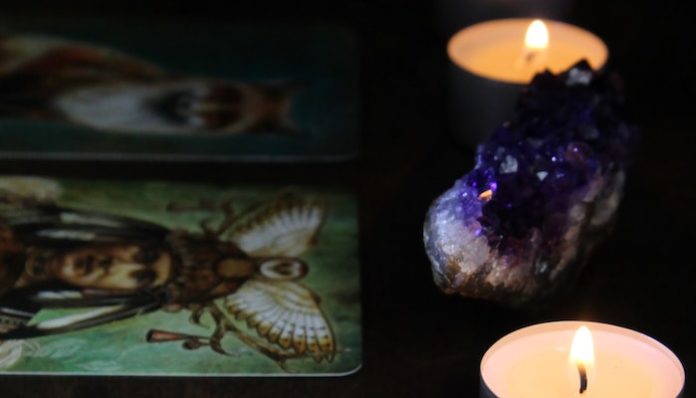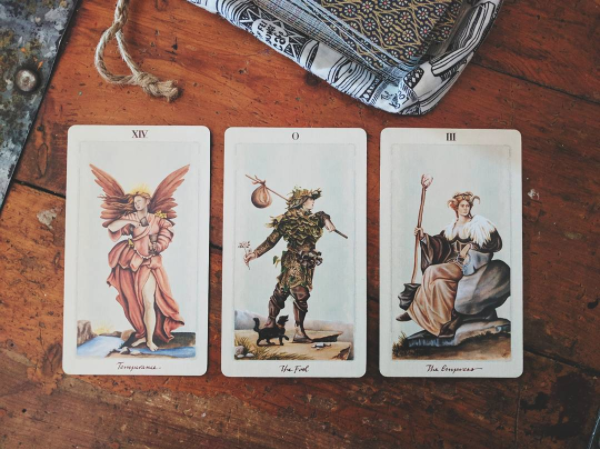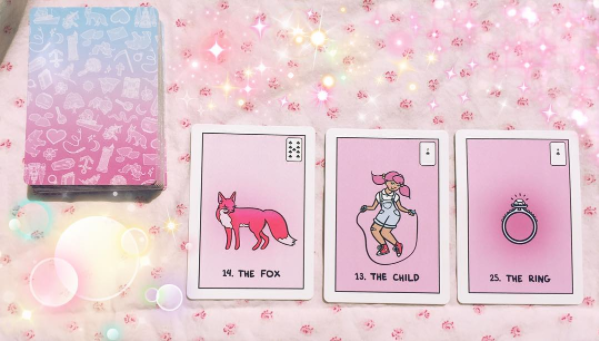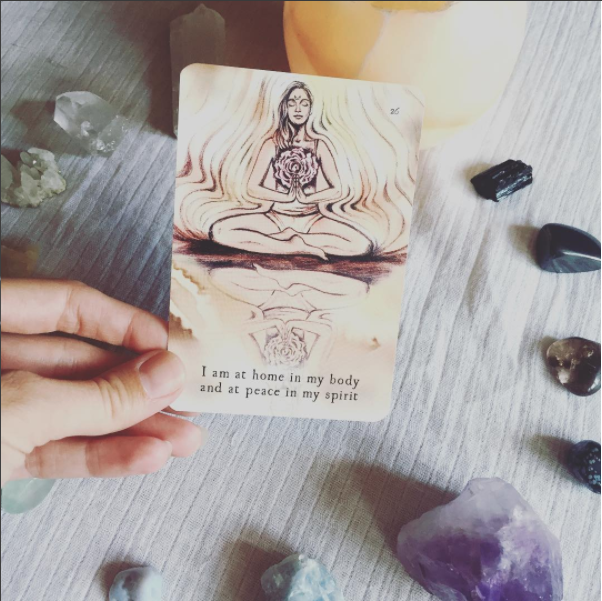
So far this October, we have talked at length at different ways to incorporate tarot cards into your life and how to use those cards to make the most out of your practice. (If you’re thinking huh?? please check out my newbie’s guide here!) Today I really wanted to hash out a few things with you because I think it’s crucial to understand this before we move forward. Here you have it: a guide for newbies between a few different types of cards.
One of the most frequent questions I hear from newbies would have to be what the difference between tarot, oracle, and Lenormand decks is.

Let’s start with the easy part. Every tarot deck is an oracle deck, but not every oracle deck is a tarot deck. Consider it like squares and rectangles, you know? If you’ve followed the Tarot B*tch series up until now, you know that tarot is very defined. There are 78 cards, four suits, and a very traditional flow. Basically, you’re going to be able to match almost any Rider-Waite-Smith deck to any tarot book. Many academics prefer the tarot because you can “study” it. Not that there is one way, but you can learn a lot from history.
Oracle decks are less rigid and have less structure. I know a lot of people who think it is easier to read oracle decks because they can intuit more. It gives them room to find their own flow. Oracle decks can have, maybe, a 78 card deck but they can also have a 20 card deck. You can have three different oracle decks and have immensely different cards that tell totally different stories and vastly different themes. Each deck is like it’s own little universe. What you gain in freedom, you lose in structure.
Brigit Esselmont of Biddy Tarot describes it like this, “I like to think of Tarot cards as the pages inside a book. When you’re doing a reading with Tarot cards, it’s like a storybook, and each of those cards is like a page in that storybook. With the Oracle cards, on the other hand, it’s more like the whole book or a chapter of the book.”
Personally, I’m so Type A, I haven’t even attempted oracle cards because I know the lack of structure would drive me up a wall. There are many situations when the tarot just doesn’t work for you, and that’s totally fine! If you’re an oracle person, you’re an oracle person. Your readings will be no less valid because you aren’t a traditional “tarot reader.”
Now, Lenormand is where sh*t kinda hits the fan for a lot of readers. Unlike tarot, a Lenormand deck has 36 cards. (This is called the Petit Jeu, which is standard, but there is the Grand Jeu which is a full playing card deck.) Unlike tarot, Lenormand cards are pretty straight forward. Tarot has so many interpretations and intuiting that you can stretch the traditional “meanings” pretty far. I know people who use Lenormand solely because there seems to be less guess work. The cards are what they are. C’est tout. Some people love this, some people hate it. What you gain in structure here, you lose in wiggle room for meanings.
Stella Waldvogel says, “I’ve been using Lenormand for some years now. Tarot tends to be kind of open-ended and philosophical, but Lenormand will simply answer the question. People want to know things like whether they will get the job, or why their boyfriends didn’t text back, and Lenormand is always good for a straight answer.”
So, needless to say, there is no one perfect system. Some people prefer one over the other, some people will solely use one and never touch the others. I think we should all experiment with divining with all of the above to truly find your calling. You can’t make an educated decision on what your method is until you’ve at least dabbled with them all at least once.
Please join us again next week! We will be diving into the wonderful world of Samhain and maybe even talk a bit about *lucid dreaming.* If you missed my interview with the inspirational Sarah Chapell, check that ish out right here.
Until next time!
Featured Image via Unsplash



















